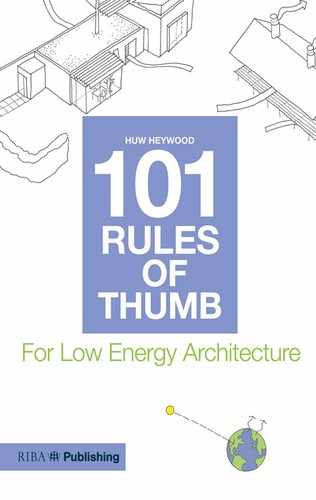Rule 81. Design for Your Climate
The basic rule is that in cold climates we should aim to keep heat in (with insulation) and in hot climates we need to keep the sun out (with shading and light colours). In the following pages, the rules of thumb for different climatic regions are illustrated with the use of some imagined buildings. The different construction methods, planning factors (location of rooms, etc.), form, orientation and natural heating/cooling techniques are shown.
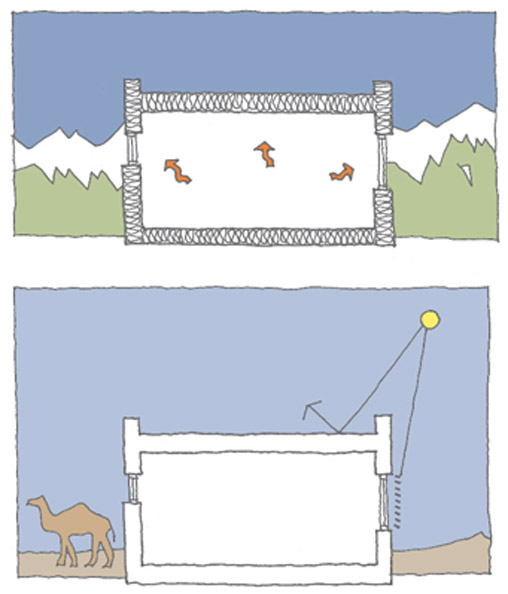
82 to 85
4 Rules for:
Hot-Dry Climate
- 82. The key is to slow the rate of indoor heating on summer days using thermal mass and shading.
- 83. Promote rapid cooling on summer evenings with wind towers and/or cross ventilation.
- 84. Use natural cooling in summer, with water if available.
- 85. Use natural heating in winter, so orientation and opening design for solar gain are crucial.


86 to 89
4 Rules for:
Hot-Humid Climate
- 86. The priority is ventilation: it must be effective, night and day.
- 87. Reduce solar heating of the building fabric with shading.
- 88. Permit a high rate of evening cooling with large openings and cross ventilation.
- 89. Allow natural cooling using shaded ground, evaporative cooling and wind.
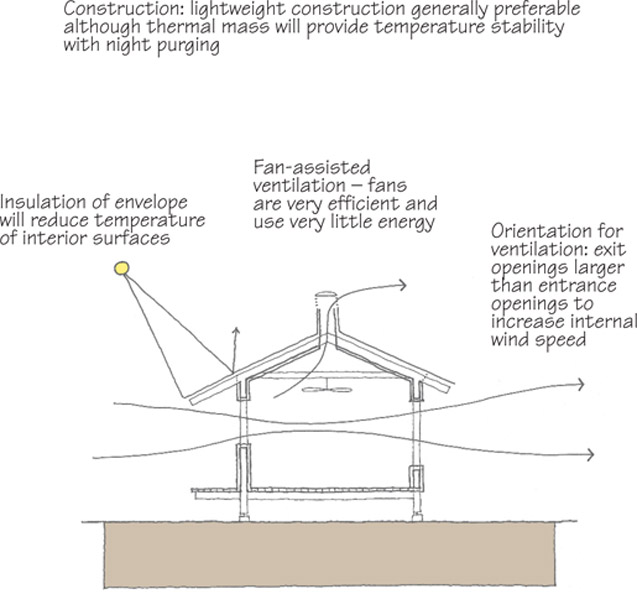
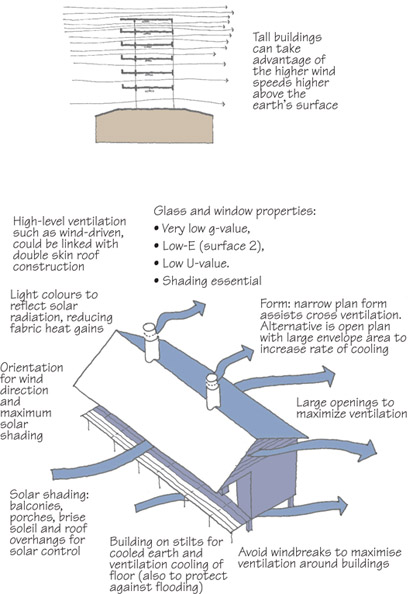
90 to 93
4 Rules for:
Cold Climate
- 90. The goal is reduced heating-energy needs using buffer zones, insulation and minimal infiltration.
- 91. Permit natural heating using solar gain.
- 92. Allow summer ventilation.
- 93. Super-insulation with thermal mass requires good ventilation in order to prevent overheating.
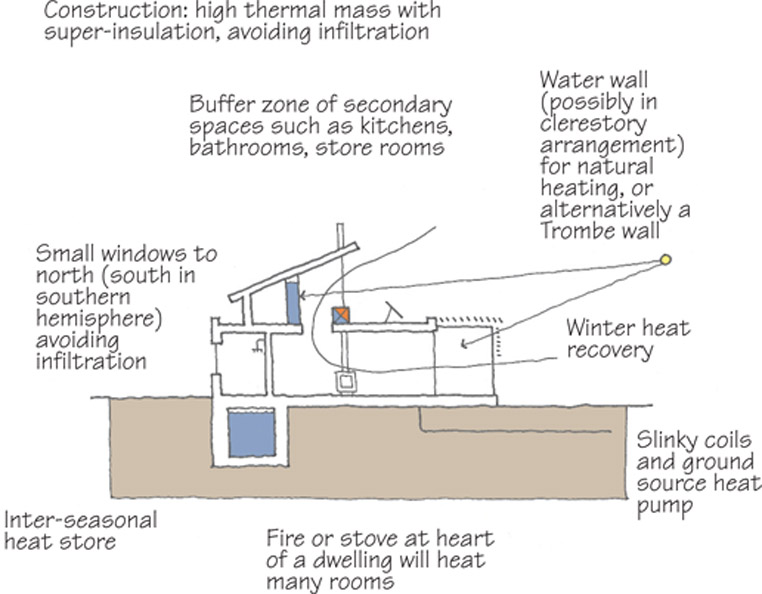
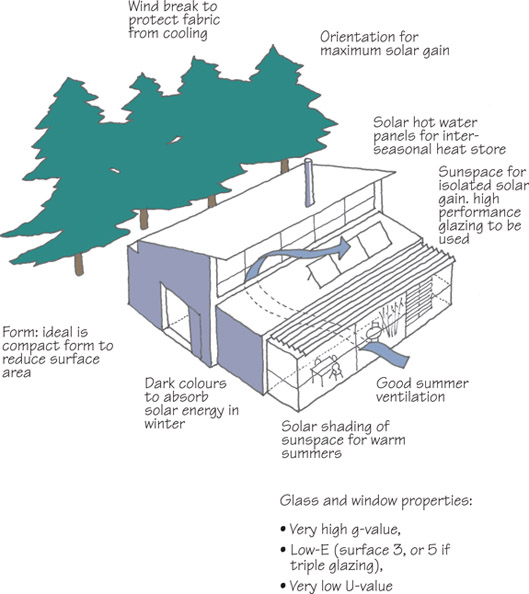
94 to 97
4 Rules for:
Cold-Winter/Hot-Summer Climate
- 94. The goal is reduced heating-energy needs using buffer zones and insulation, together with reduced infiltration.
- 95. Use natural heating and cooling with sun and wind.
- 96. Allow good summer ventilation, including nocturnal ventilation.
- 97. Do not block summer breezes with a winter windbreak.
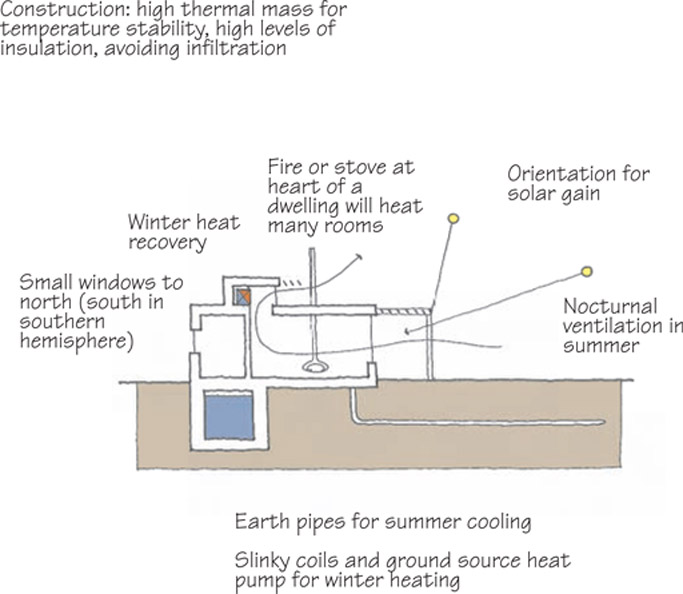

98 to 101
4 Rules for:
Temperate Climate
- 98. The goal is reduced heating-energy needs using buffer zones and insulation to reduce winter heat loss.
- 99. Prevent overheating in summer with thermal mass (and nocturnal ventilation) for temperature stability, shading as needed.
- 100. Use natural heating in winter.
- 101. Reduced air infiltration is a must: sheltered entrances and wind lobbies included.

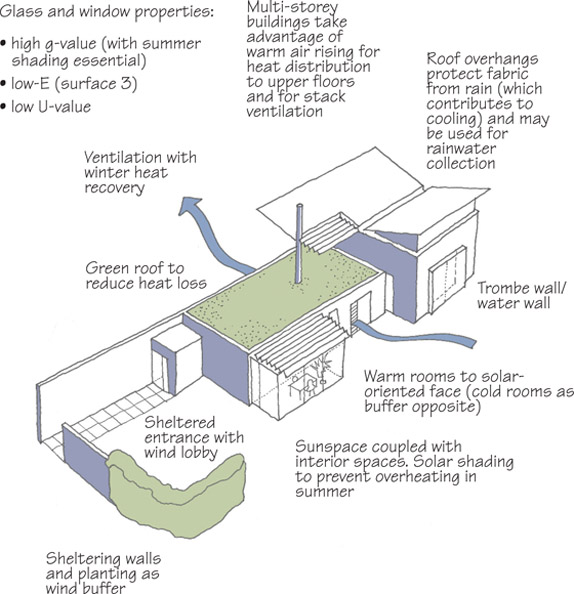
..................Content has been hidden....................
You can't read the all page of ebook, please click here login for view all page.
